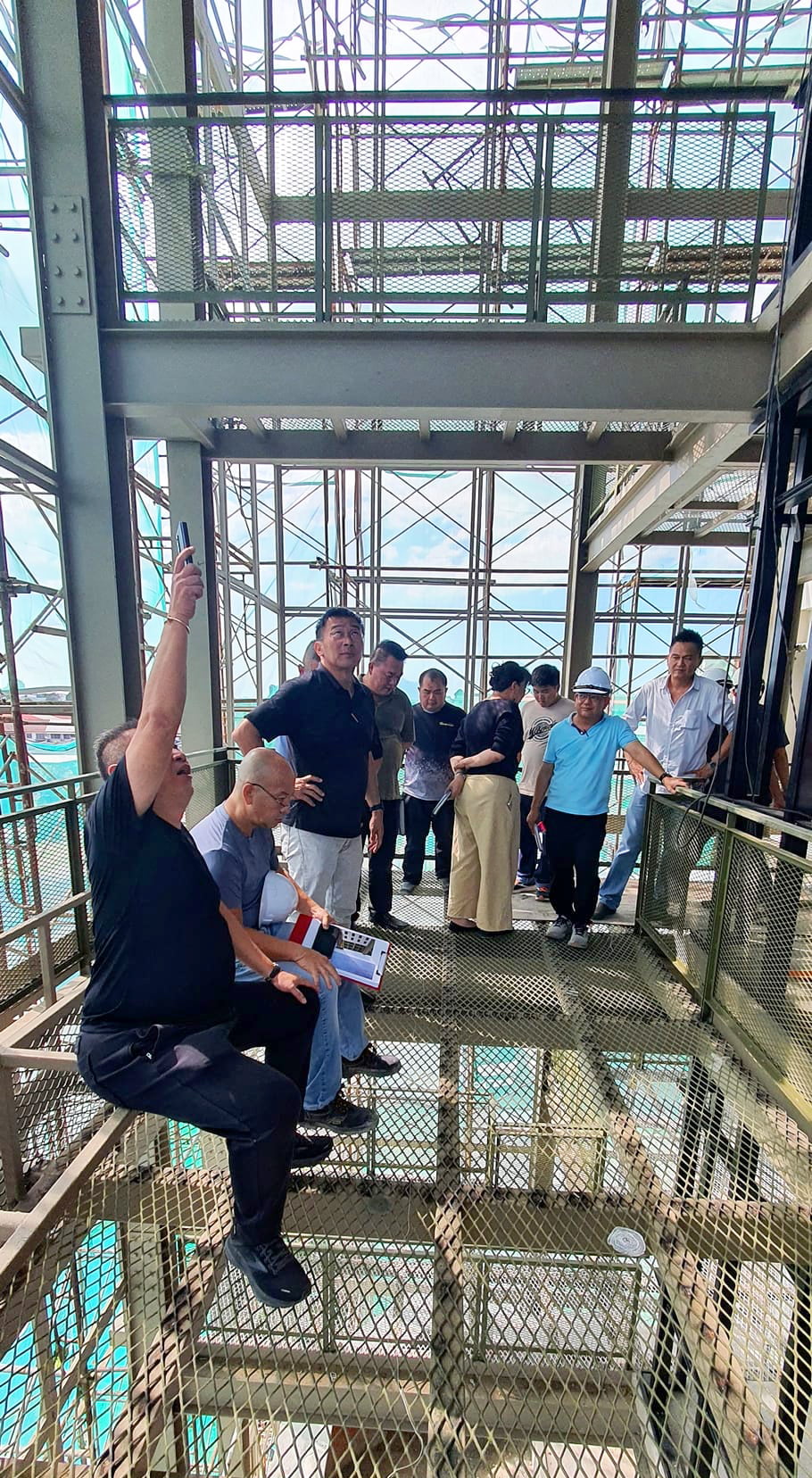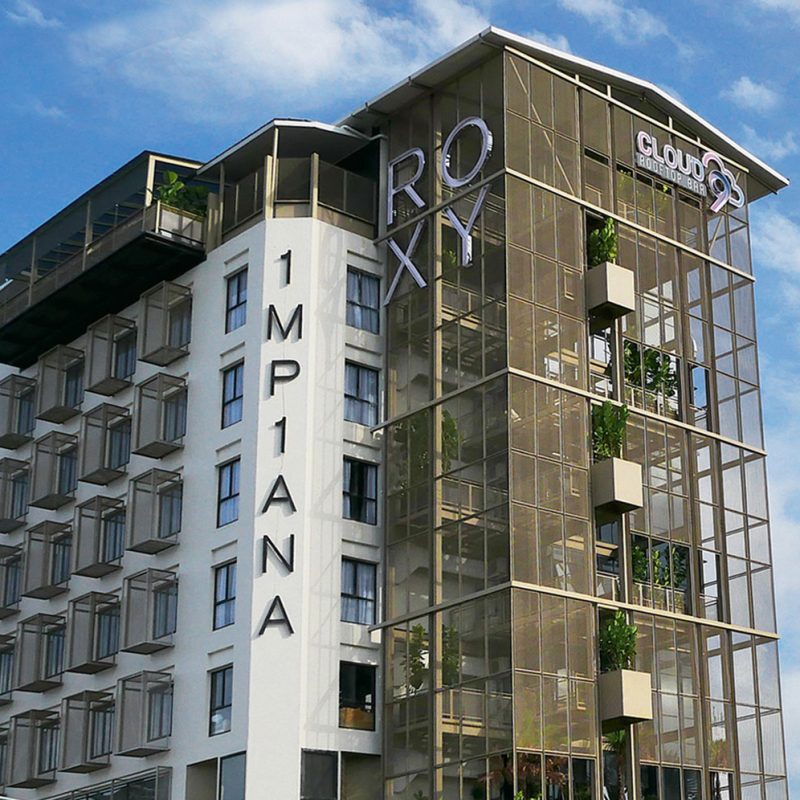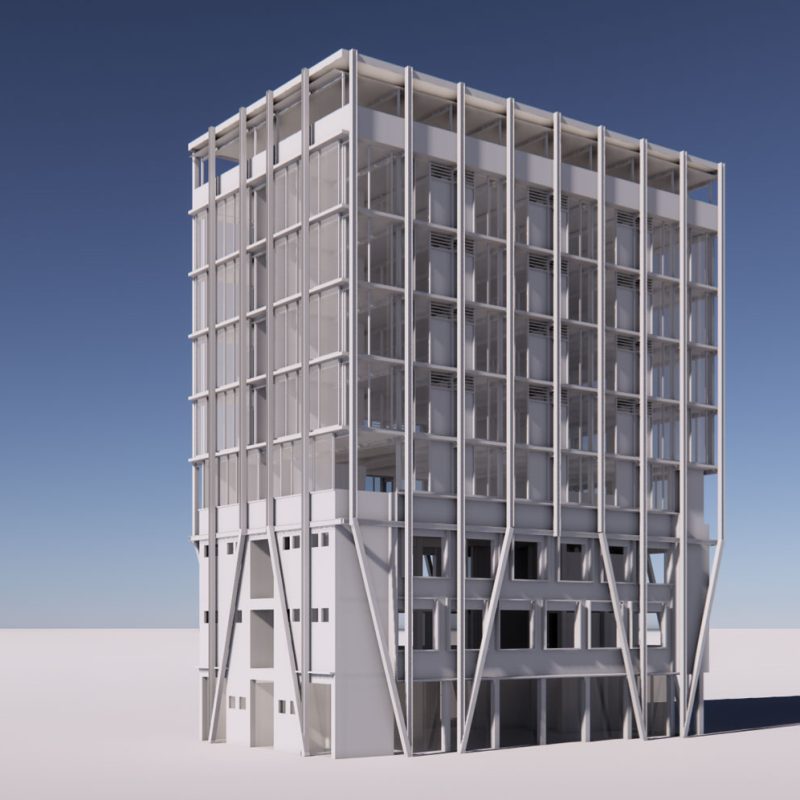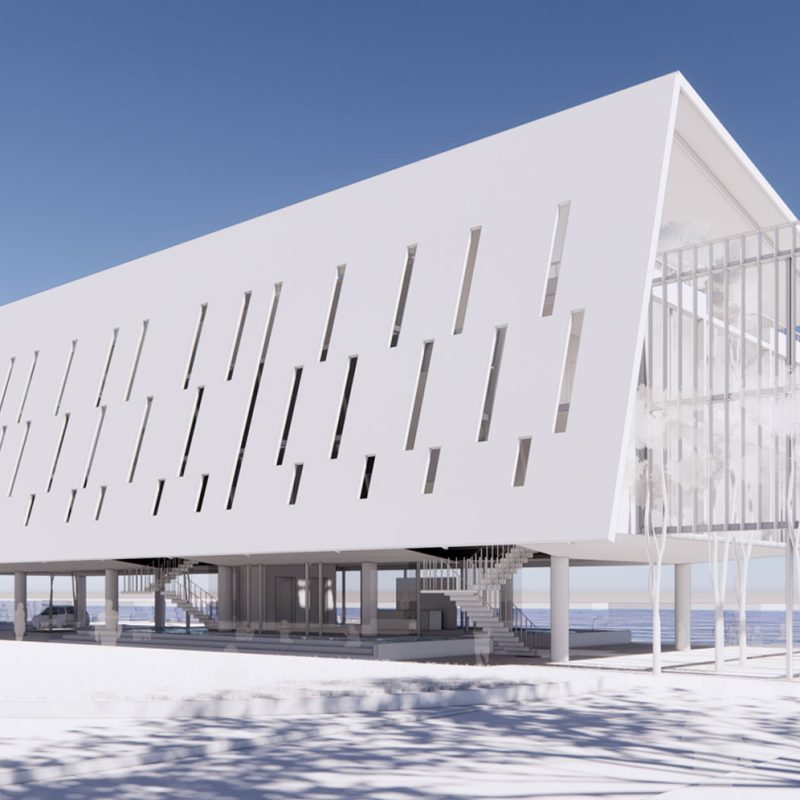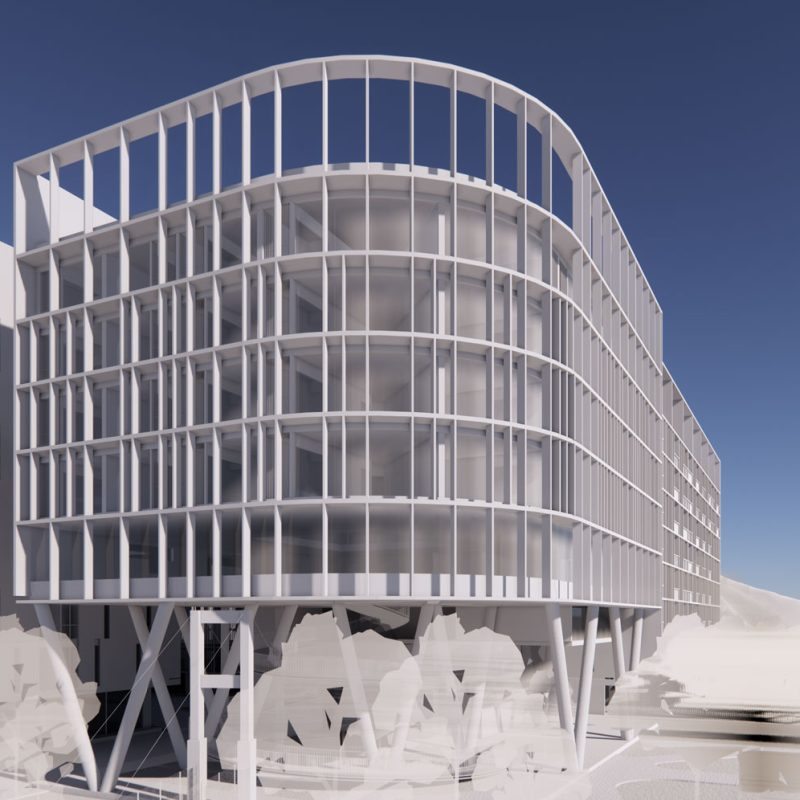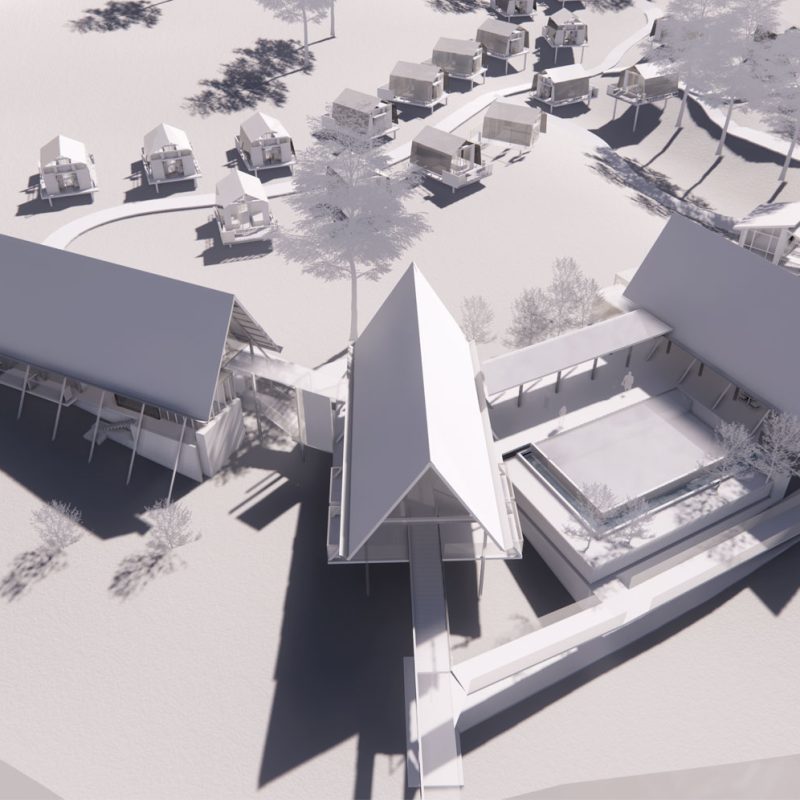Location
- Malaysia
City
- Kuching | Sarawak
Duration
- 2022 – 2023
Client
- Tecktonic & Sons Holdings Sdn Bhd
Surface
- Site area
- : 0.21 acre
- Building area
- : 4876.33 m2
- Building height
- : 28.8 m | 9 storeys
Status
- Completed
Project Type
- Alteration and Addition
- Hospitality
Themes
- Adaptive Reuse | Hotels
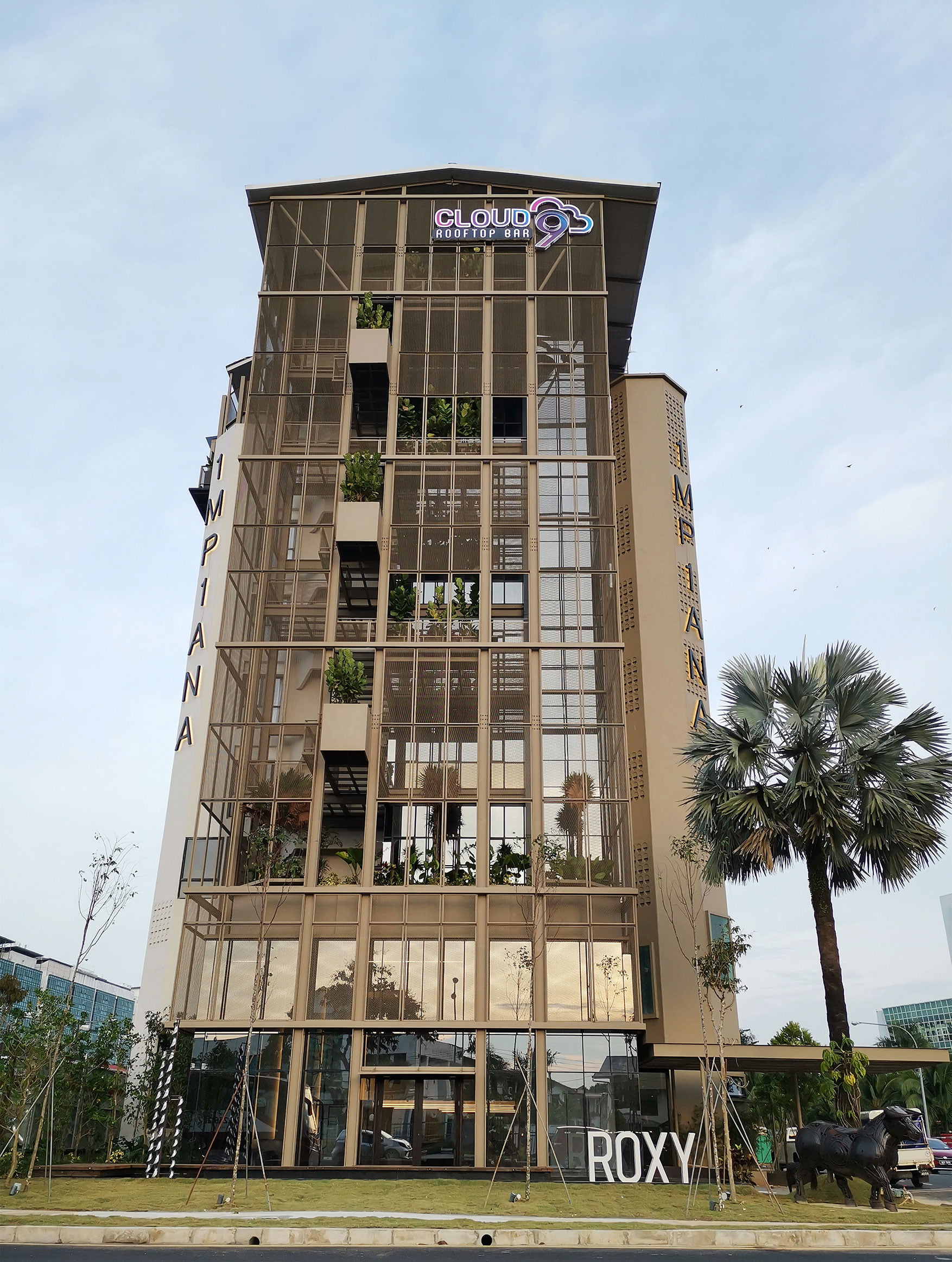
This formerly derelict building has cast away its reputation of being haunted, and is now the haunt of local hipsters and trendsetters.
The Country View Hotel was believed to have been built in 1973; already part of Kuching’s skyline some ten years before Wisma Saberkas. In the 80s, it was sold and renamed as Impiana Hotel, and operated for several years before closing down. There were sporadic attempts to revive it without much success. It was left vacant and derelict for more than 20 years until the 2nd of April 2022, when Tecktonic and Sons Holdings Sdn Bhd arrived with plans for its refurbishment and revival as a hotel.
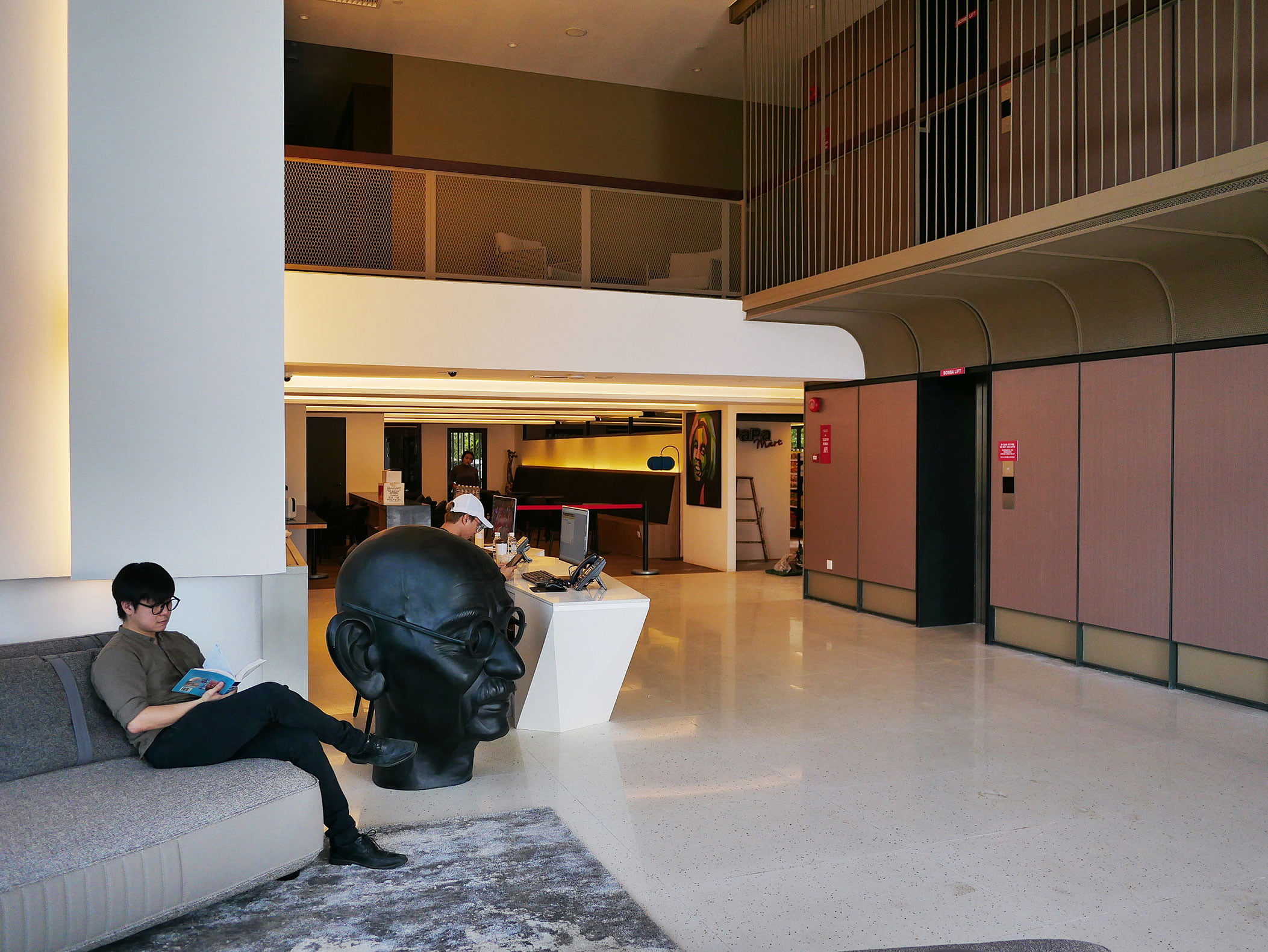
Initial inspections showed that the building is structurally sound, perhaps a little too sound – there are columns in the middle of the guest rooms. Concrete floor beams are oversized and cast with boards instead of plywood; traces of the timber formwork are visible. Inside the building, the services have been stripped, the doors are in a bad state, the windows have been removed, and there were plants growing in the rooms.
This building has remained in this state of decay for so long that it has etched itself into the local history and memory of local inhabitants. We felt that the refurbishments need to manifest themselves externally, to change its outlook so that a new chapter of its personal history can start.
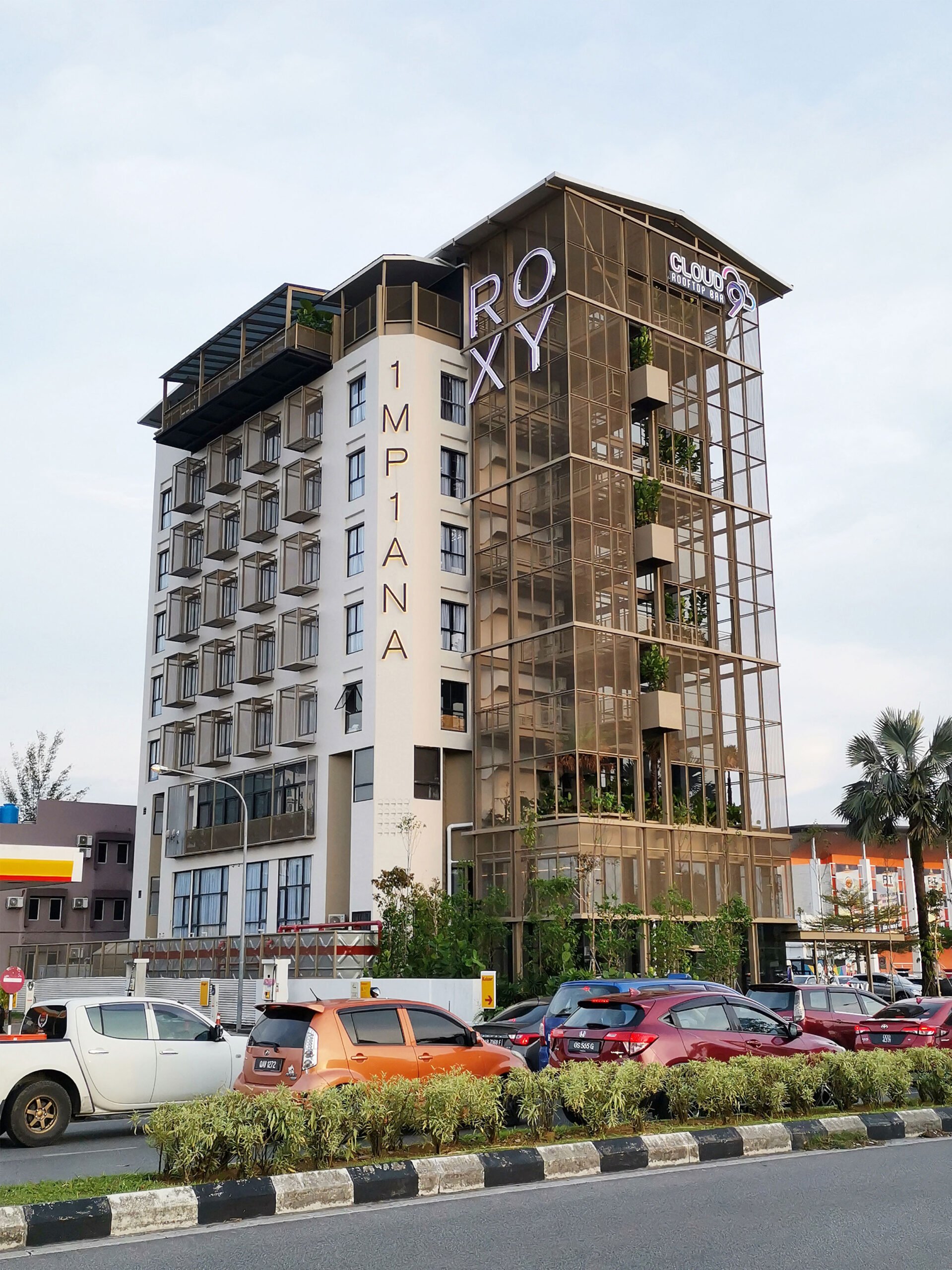
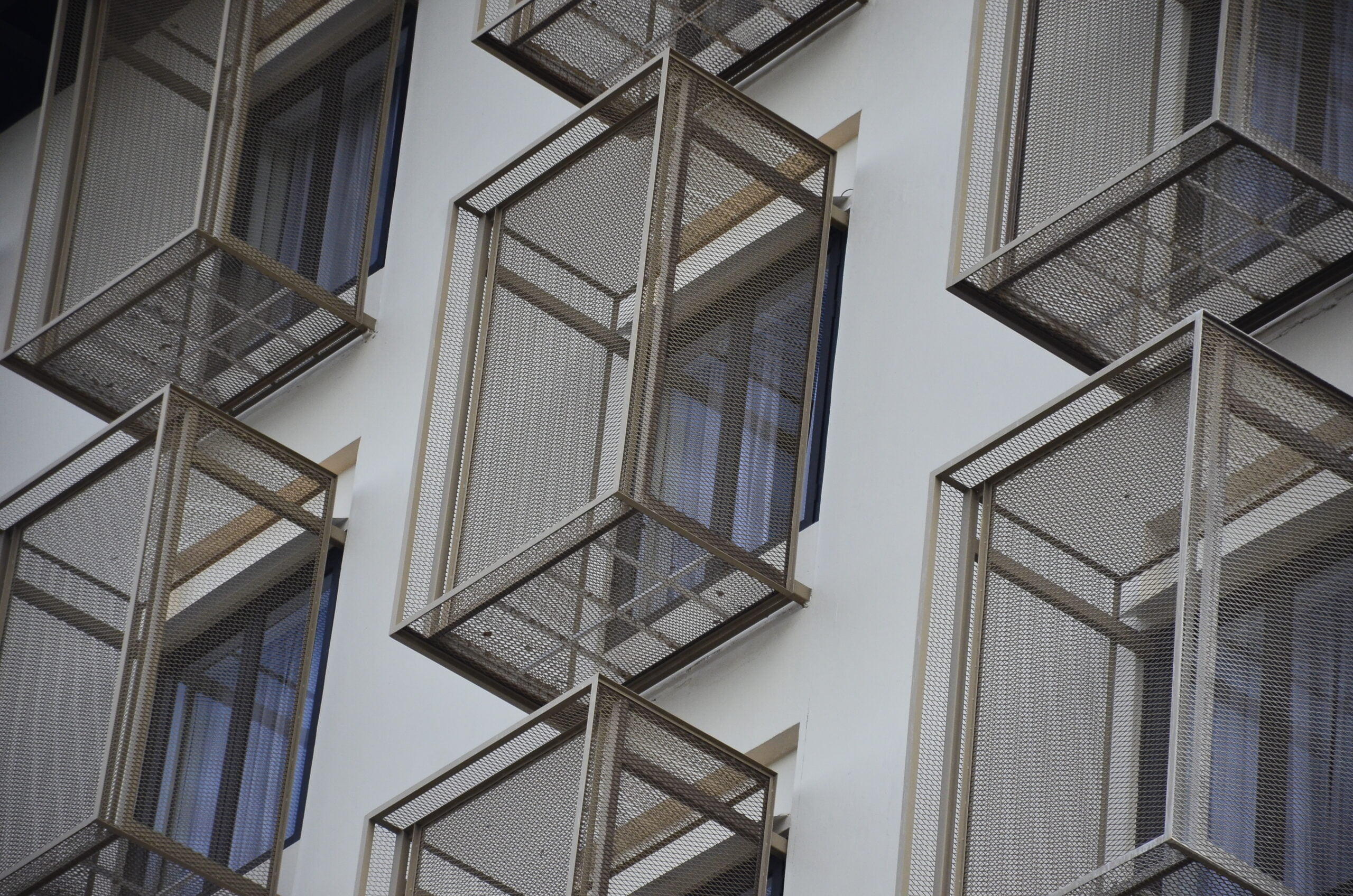
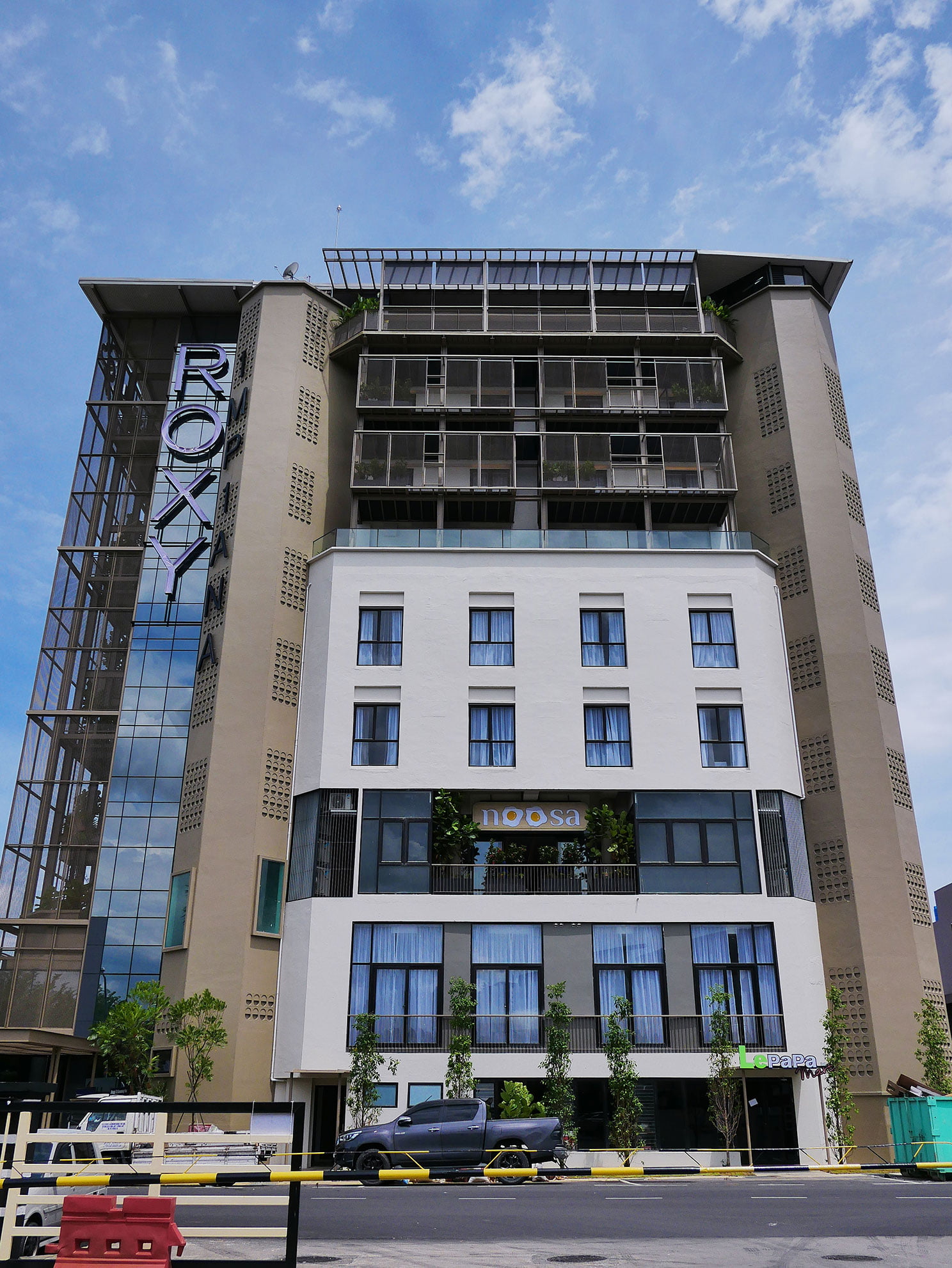
Although the building was originally designed as a hotel, much of its planning was updated. There were several major problems to overcome:
The hotel lobby was located on the first floor, which it shared with firefighting water tanks.
We relocated the hotel lobby to the drop-off porch on the ground floor and the first floor is converted into suite rooms. The giant flight of stairs is removed to allow access towards the rear of the building which now houses a lounge and convenience store. Lush landscaping and outdoor elements provide a backdrop to the new hotel lobby and reception. The drop-off is framed by a new steel canopy and shaded by an existing palm tree.
There was only one passenger lift which stopped on the first floor, so guests have to ascend a long flight of stairs to get to the lobby and check-in. Access and a sense of arrival were missing.
We added a new steel lift shaft, and extended the existing lift to the ground floor, now the hotel is served by two lifts. The addition of new steel lift shaft gave us the idea of ‘re-framing’ the existing building to serve two main purposes:
- to give the building a new facade in line with its new lease of life
- to provide a garden on every floor, accessible from every hotel corridor

The hotel café-and-dining was on the second floor. It overlooked the top of the drop-off canopy, which was on a different level from the dining floor. There was evidence of attempts to create an outdoor component for the cafe; a timber stair and decking to bring the two levels together.
This floor retains its original function as the hotel restaurant. We introduced landscaping elements and converted the concrete roof of the front porch into a garden. The kitchen is re-designed to suit the latest F&B requirements. It includes a dumbwaiter that links the loading bay on the ground floor to the restaurant as well as the sky bar on the 8th floor. In keeping with current consumer trends, a seminar and private dining room is carved out from the main dining floor.
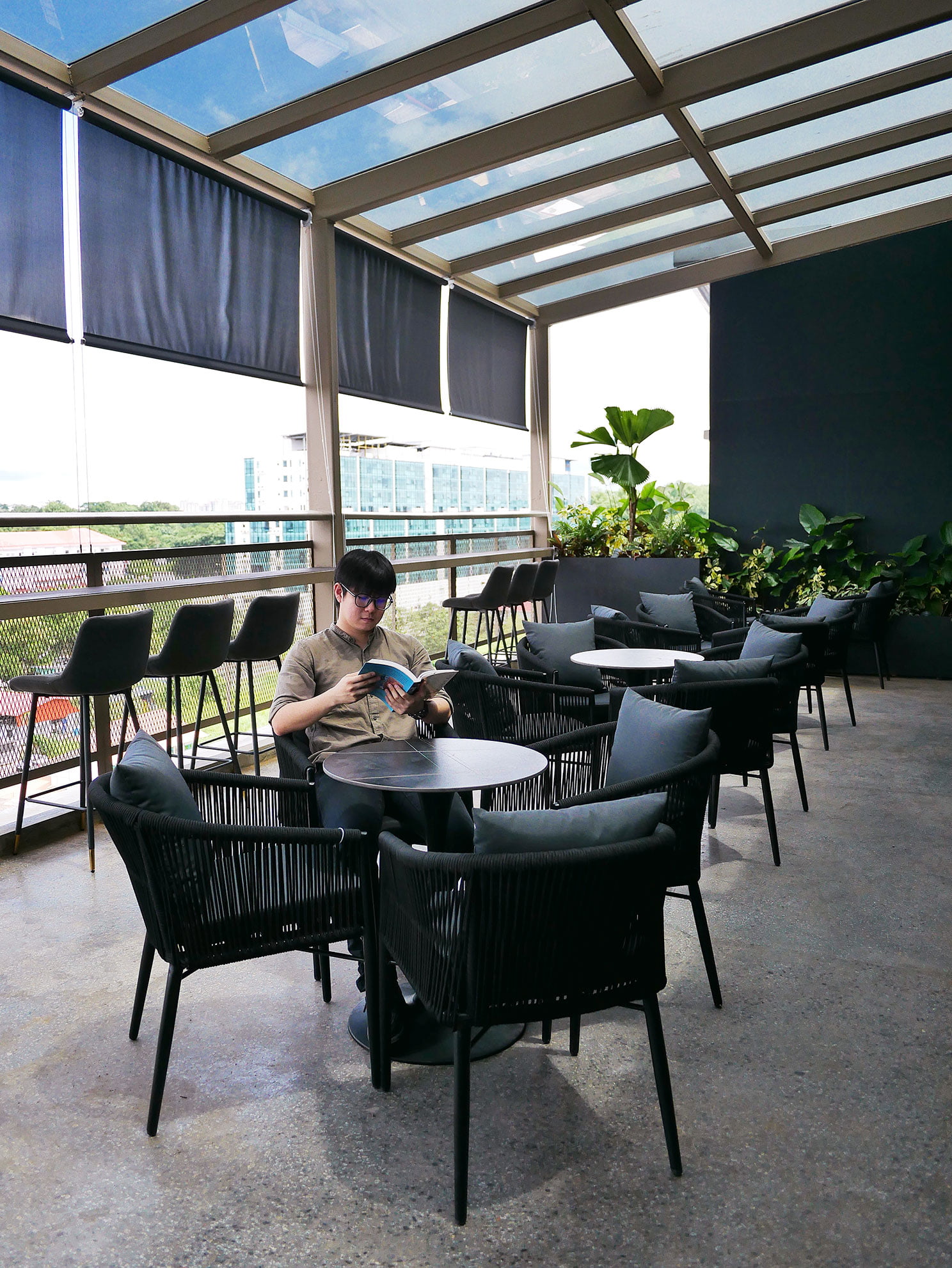
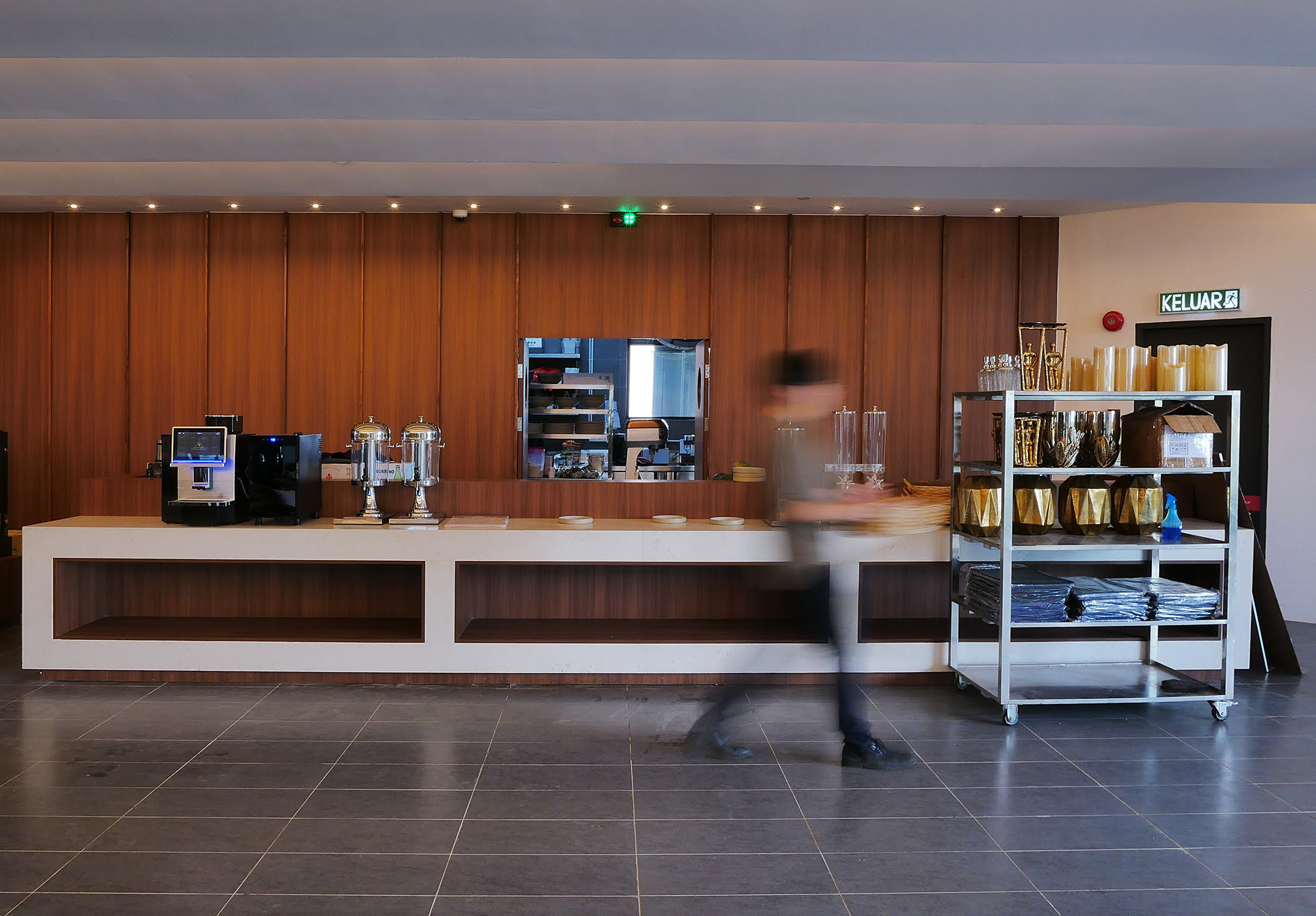
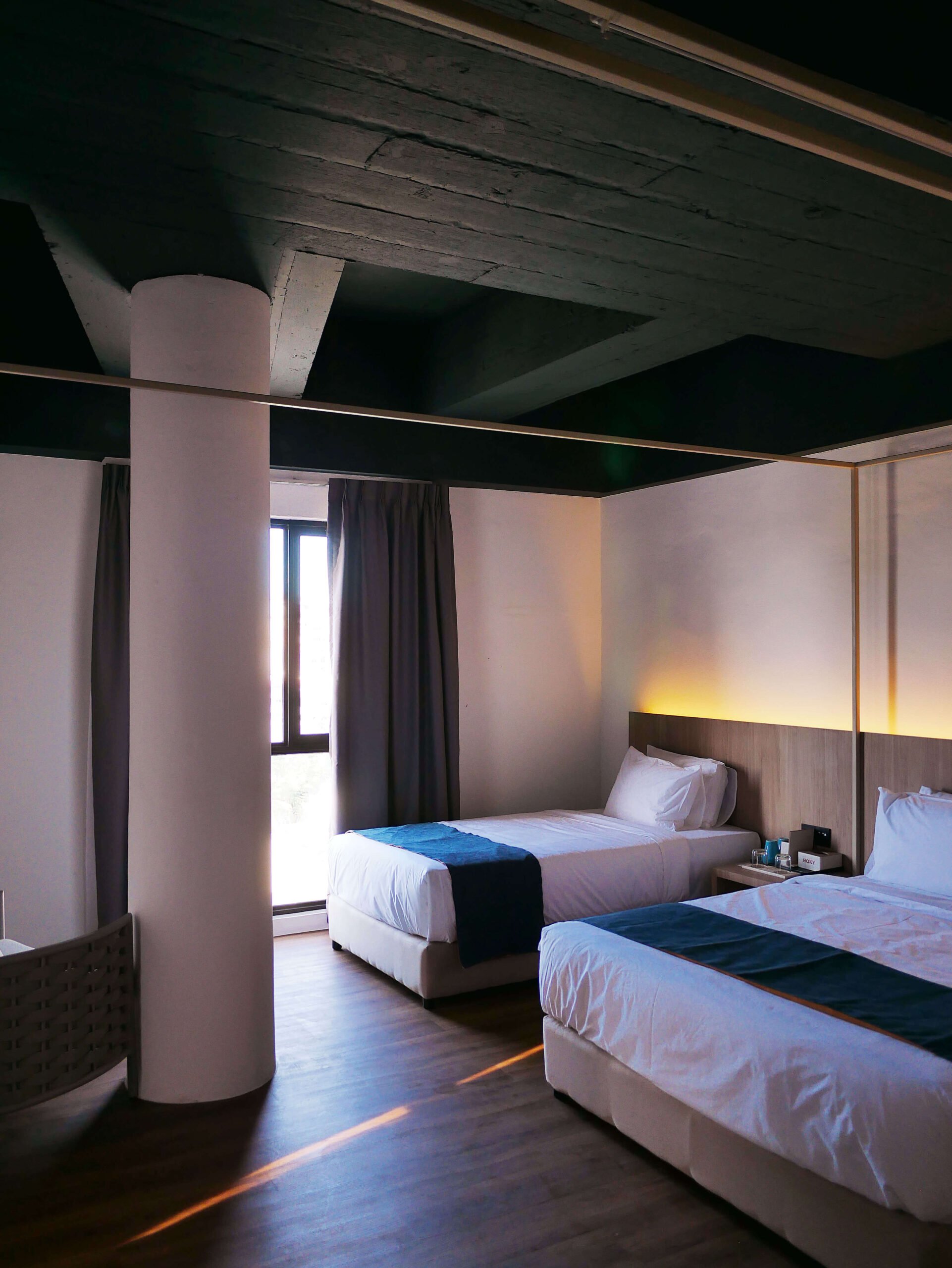
There were 50 guest rooms; 10 per floor of reasonable size unless there is a column in the room. This happens in 4 of the 10 rooms on every floor. The floor-to-floor height was a fraction over 3 m and there was only a small window for each guest room.
We kept the original guest room layouts to optimise time and cost, making only a few small changes:
- removed part of the bathroom wall to let in more natural light
- extended the small windows into balcony ‘pods’ that articulate the facade, while giving each room an outdoor component
The interior design of the guest rooms is minimal, using steel framing to define spaces and functions, and wall panelling to conceal wiring without hacking into the existing brick walls.
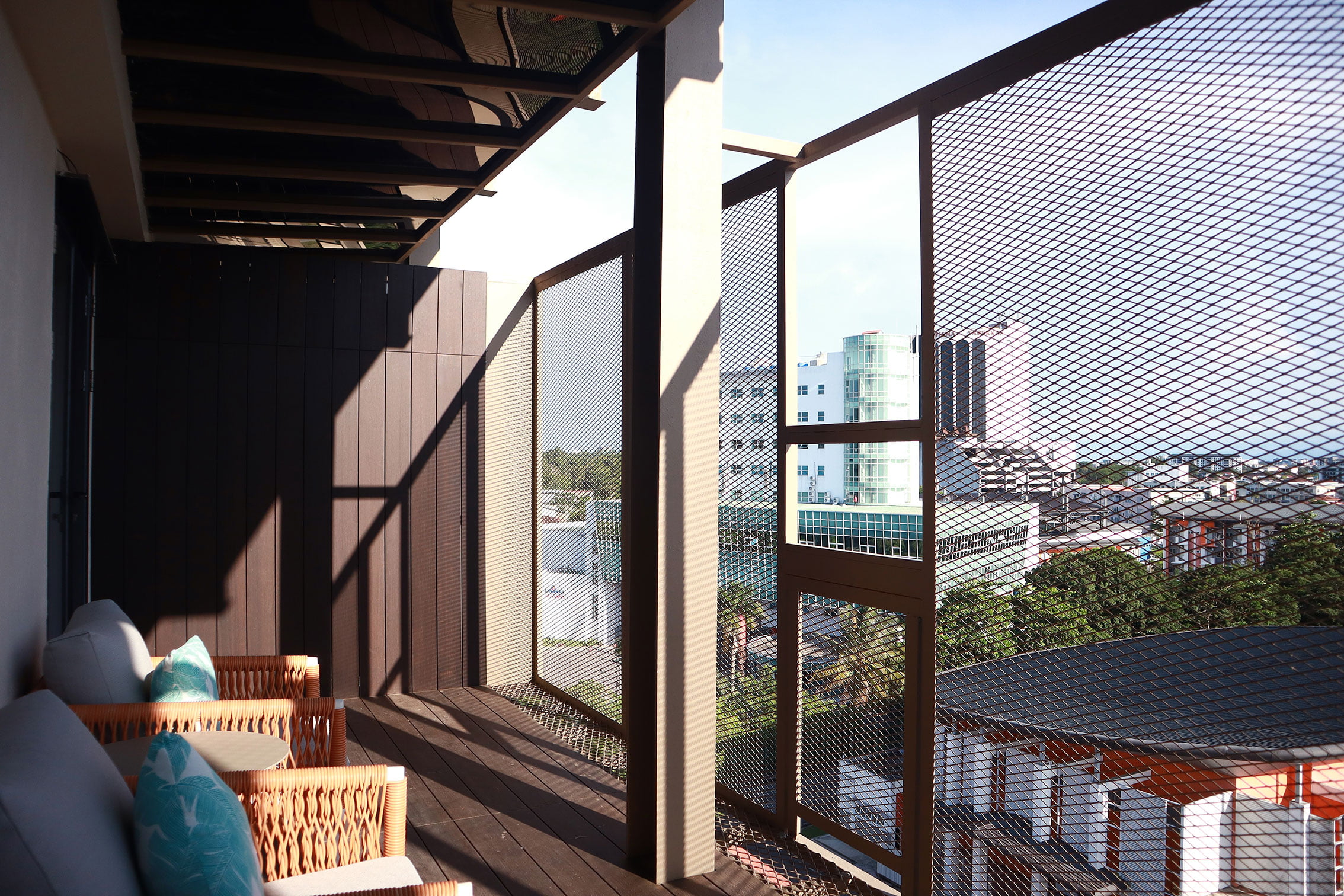
On the roof level, there was evidence of a roof structure added over the slab to create a lounge or lookout. It was hard to tell, as the structure had rotted away and fallen onto the roof slab. The views from this level are superb; Kuching to the north and Gunung Serapi to the west.
The roof is reinstated for the ‘CLOUD9’ sky bar, with its state-of-the-art audio-visual equipment and priceless views of Kuching and the surroundings.
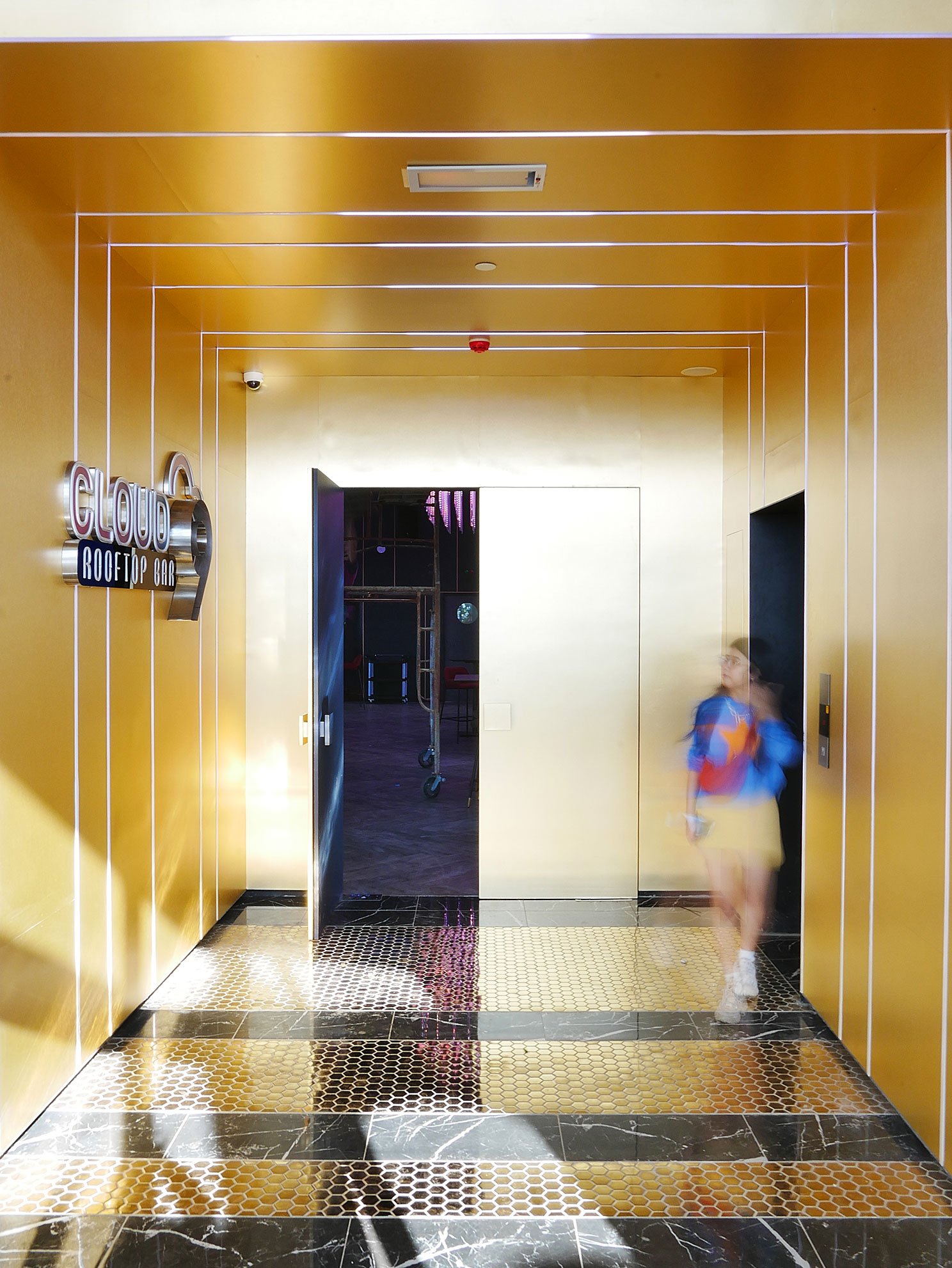
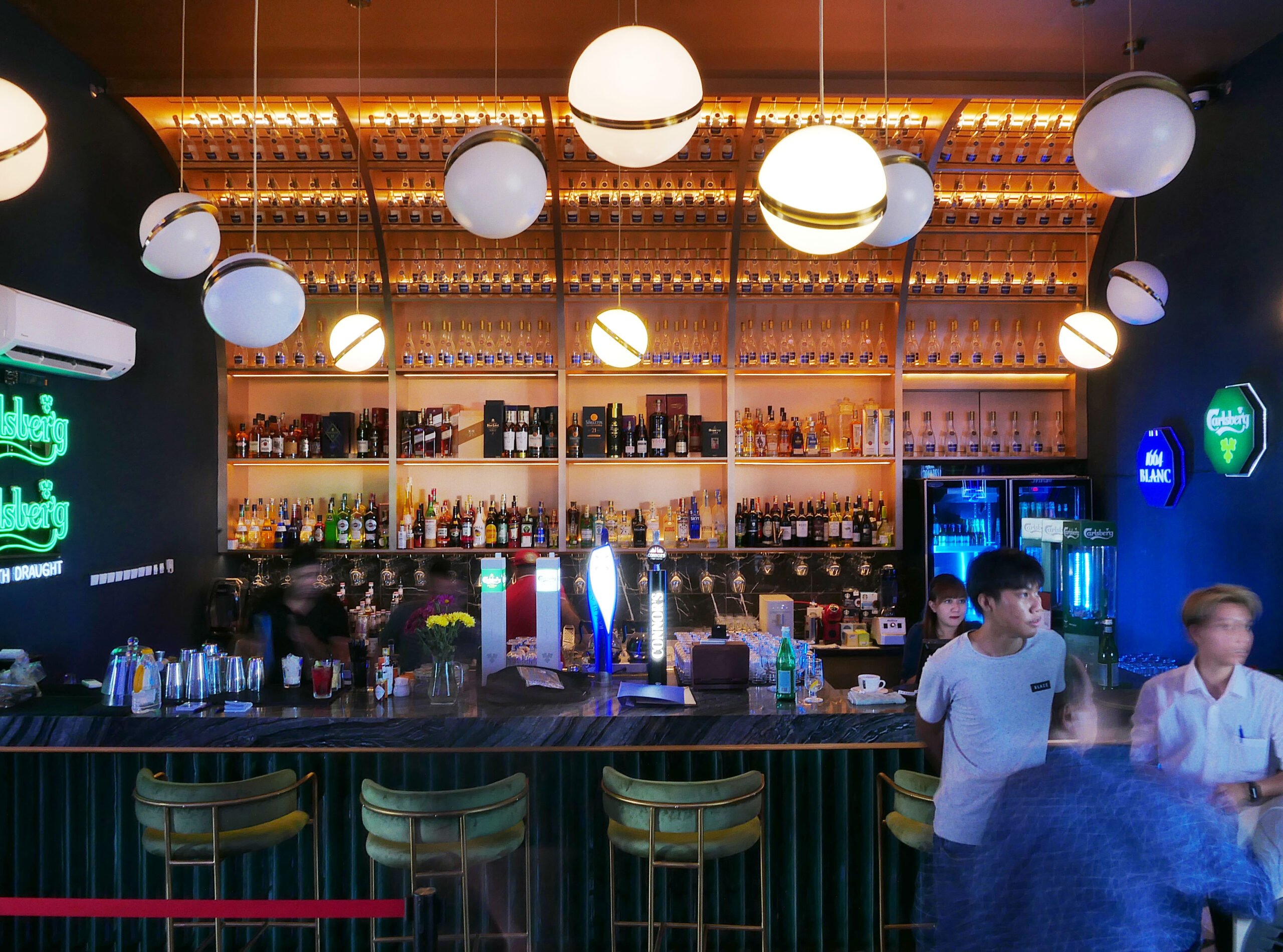
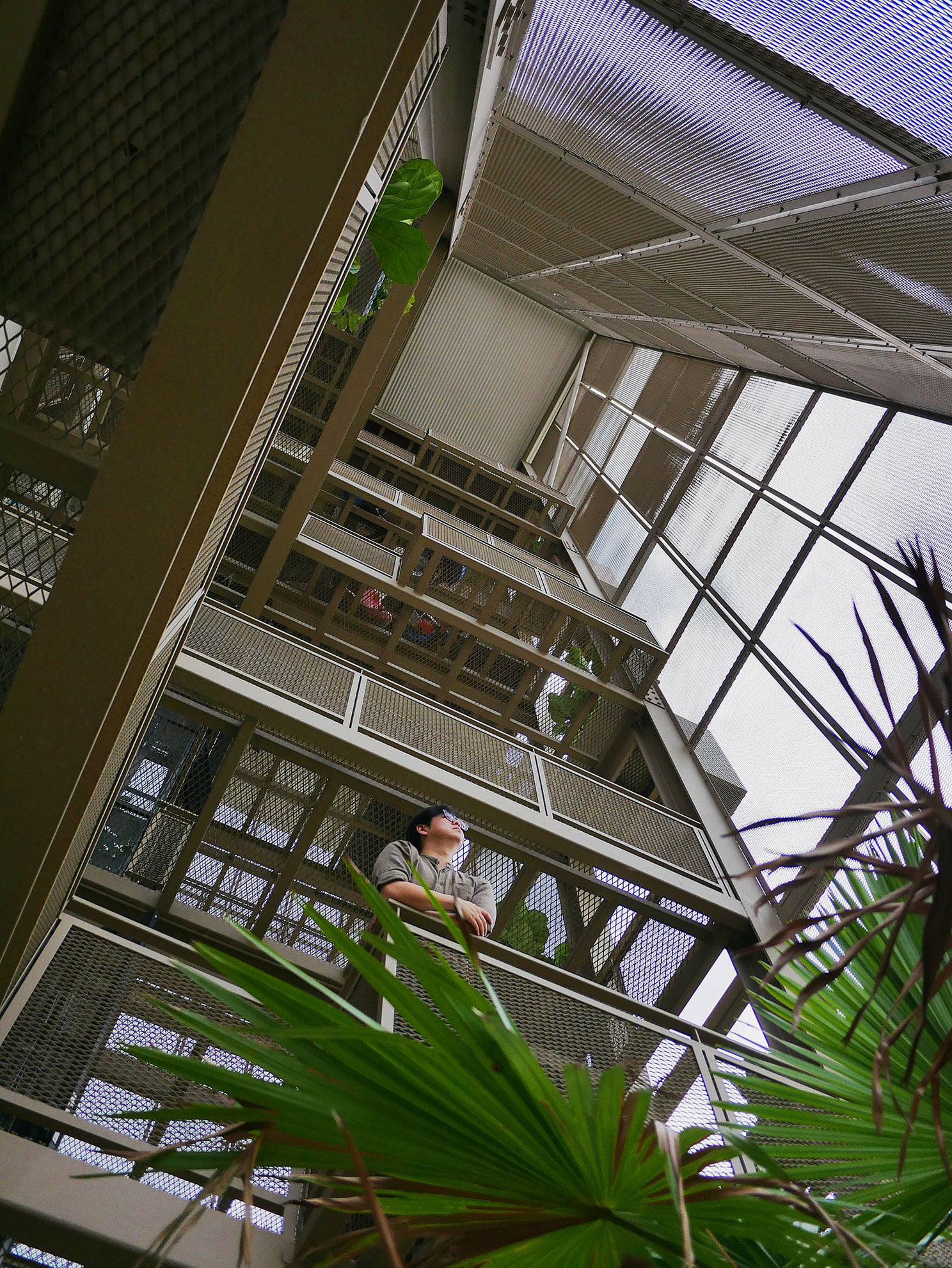
During the partial demolition phase of this project, there were many in the local community who wondered if we were demolishing the entire building – because it was old, because it was ugly, because it had a reputation of being haunted.
It was built in the 70s, and was the tallest structure in this part of Kuching for the next 10 years until Wisma Saberkas was completed. We were able to extend the building’s personal history by adding new elements and functions within its existing structure. In its rebirth, the new is able to have a dialogue with the old.
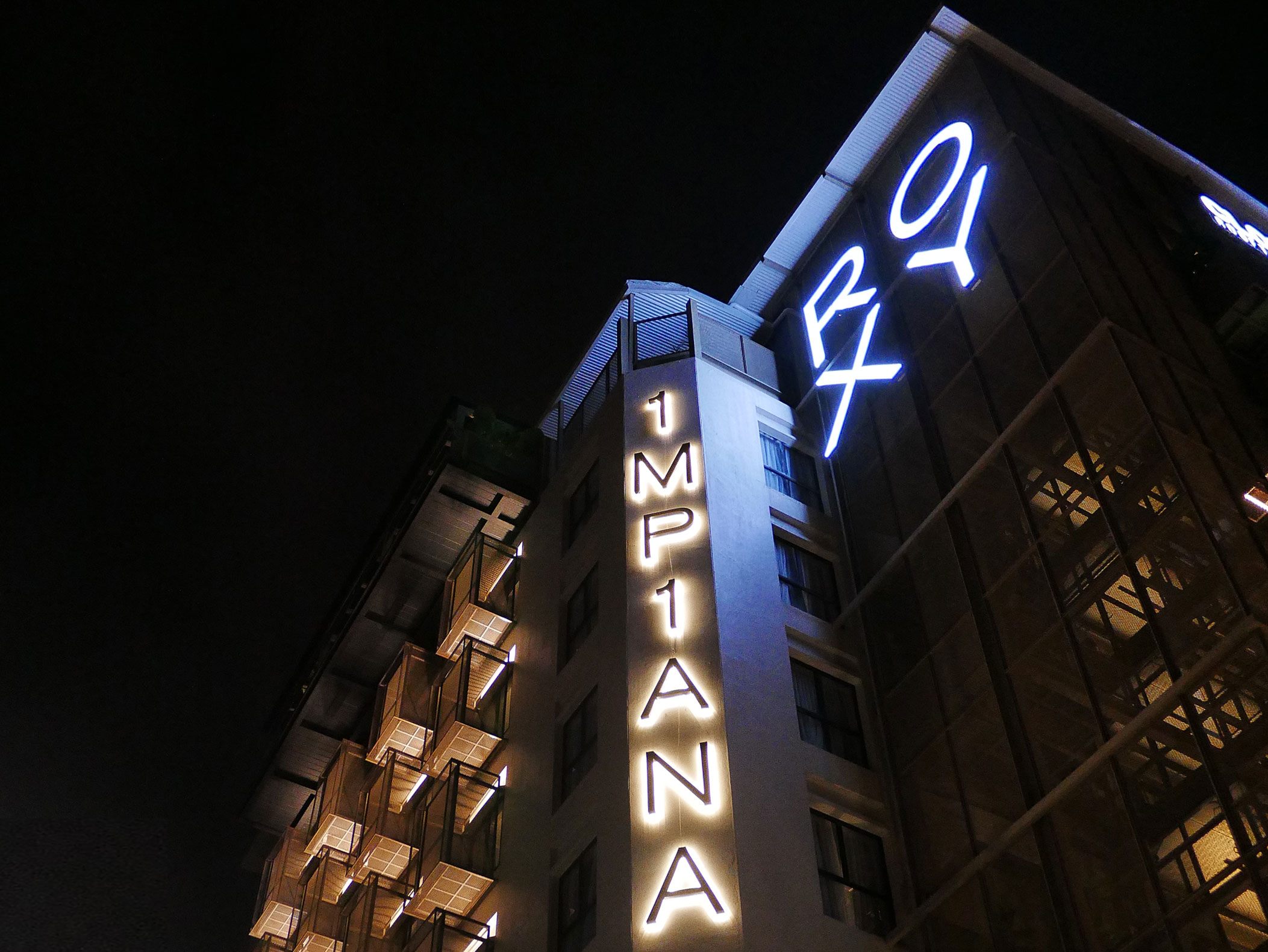
Team Credits
Architect
- MWA Architects Sdn Bhd
Engineer
- C & S : Jurutera Minsar Sdn Bhd
- M & E : Jurutera JSW Sdn Bhd
CLOUD9 Interior Designer
- MNSC Architects
Landscape Architect
- WM Koncepto Company Limited
Contractor
- Rimba Hartawan Sdn Bhd
Design Team
- Wee Hii Min
- Freddie Lo
- Louis Ting
- Melvin Chan
Photography
- Freddy Chong
- Melvin Chan
- Sean Wee
- Wong Qin Kae
- Peggy Chai
- Grace Teoh
- Jenny Chow
Videography
- Joanne Ho
- Sean Wee
- Jenny Chow
Publications
Share our project
